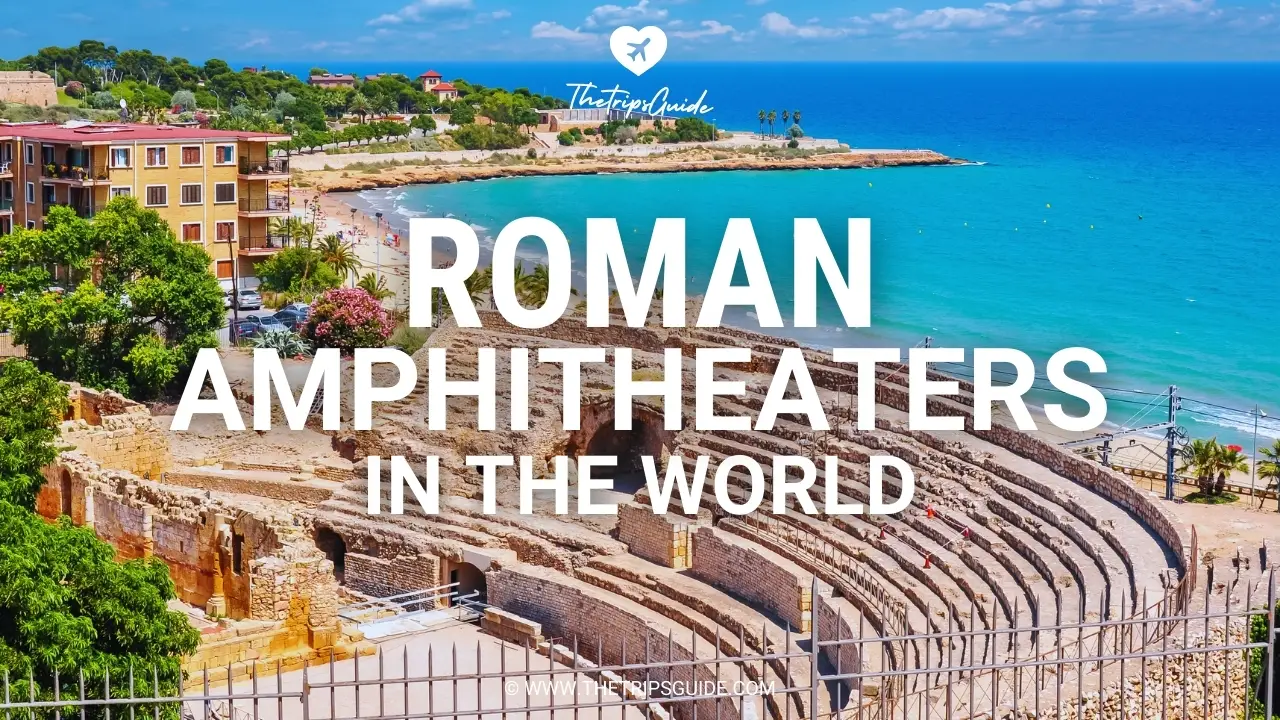
Ah, the Romans sure knew how to build stuff, and they were big fans of some brutal entertainment! Those guys were into engineering marvels and games that got your heart pumping, especially the blood-soaked spectacles like gladiator fights.
Now, let's talk about those epic structures they left behind – the amphitheaters.
The Romans dotted their empire with these circular wonders, and some are still standing tall, ready to take you on a trip back in time.
Forget about those oval-shaped arenas; we're talking about full-circle amphitheaters that scream history. And, just to be clear, we're leaving out Roman theaters – the Aspendos Theater in Turkey can claim that title.
Roman Amphitheaters: In brief
What is Roman Amphitheaters?
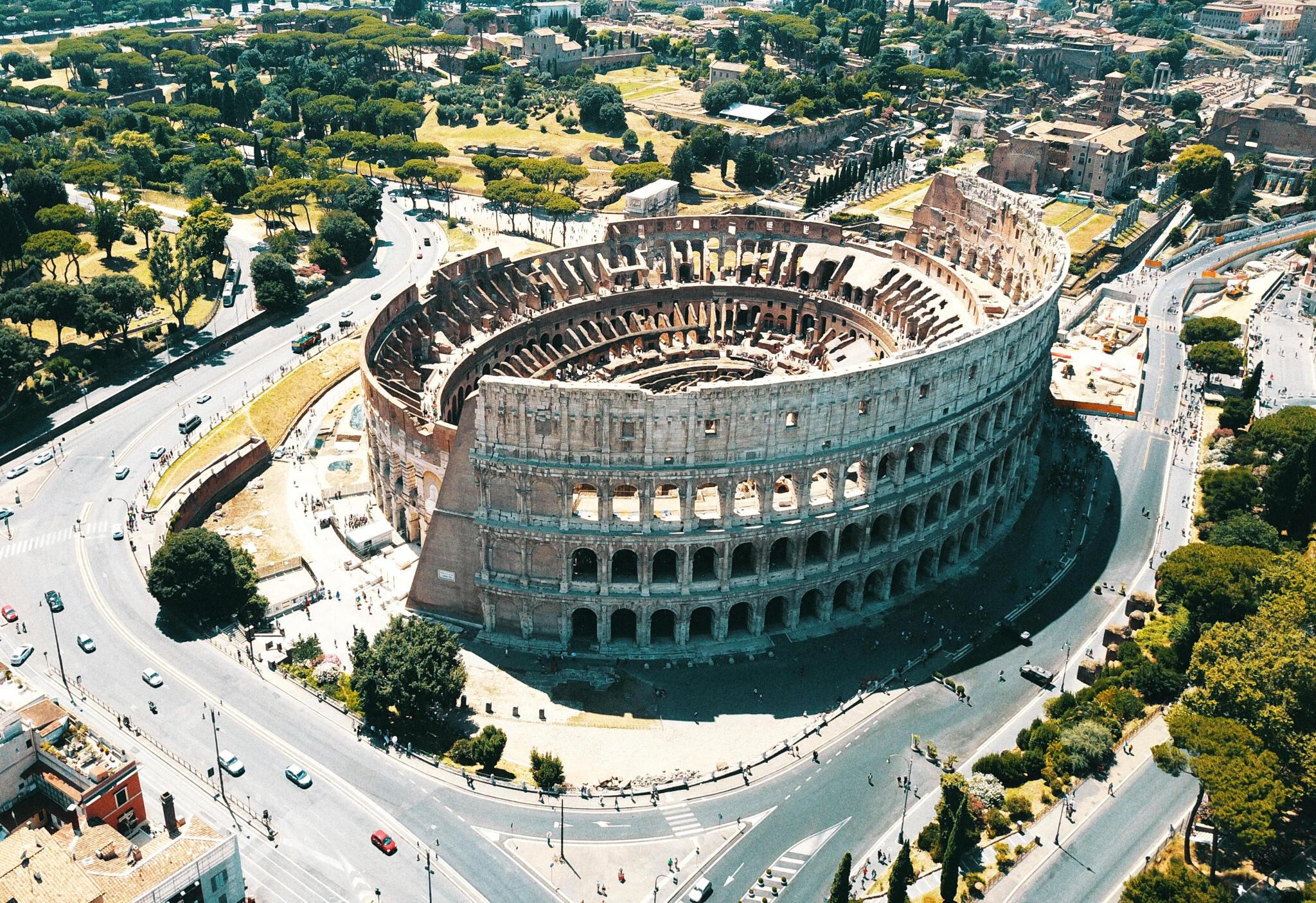
Roman amphitheaters, like the Colosseum in Rome, were ancient entertainment hotspots. These oval arenas hosted gladiator contests, animal hunts, and sea battles, captivating crowds of up to 80,000 people.
Imagine fierce gladiators clashing swords and shields in the center, while the audience, seated in tiered arrangements, cheered on. These architectural wonders, with their arches and columns, showcased the Romans' engineering finesse.
As you explore, check out other gems like the Arena of Nîmes in France and the Amphitheatre of Pompeii in Italy.
Roman amphitheaters – where history and entertainment collide in a dazzling display of ancient spectacle!
Top Famous Roman Amphitheaters
What's In This Post?
Enjoy!
1. Colosseum
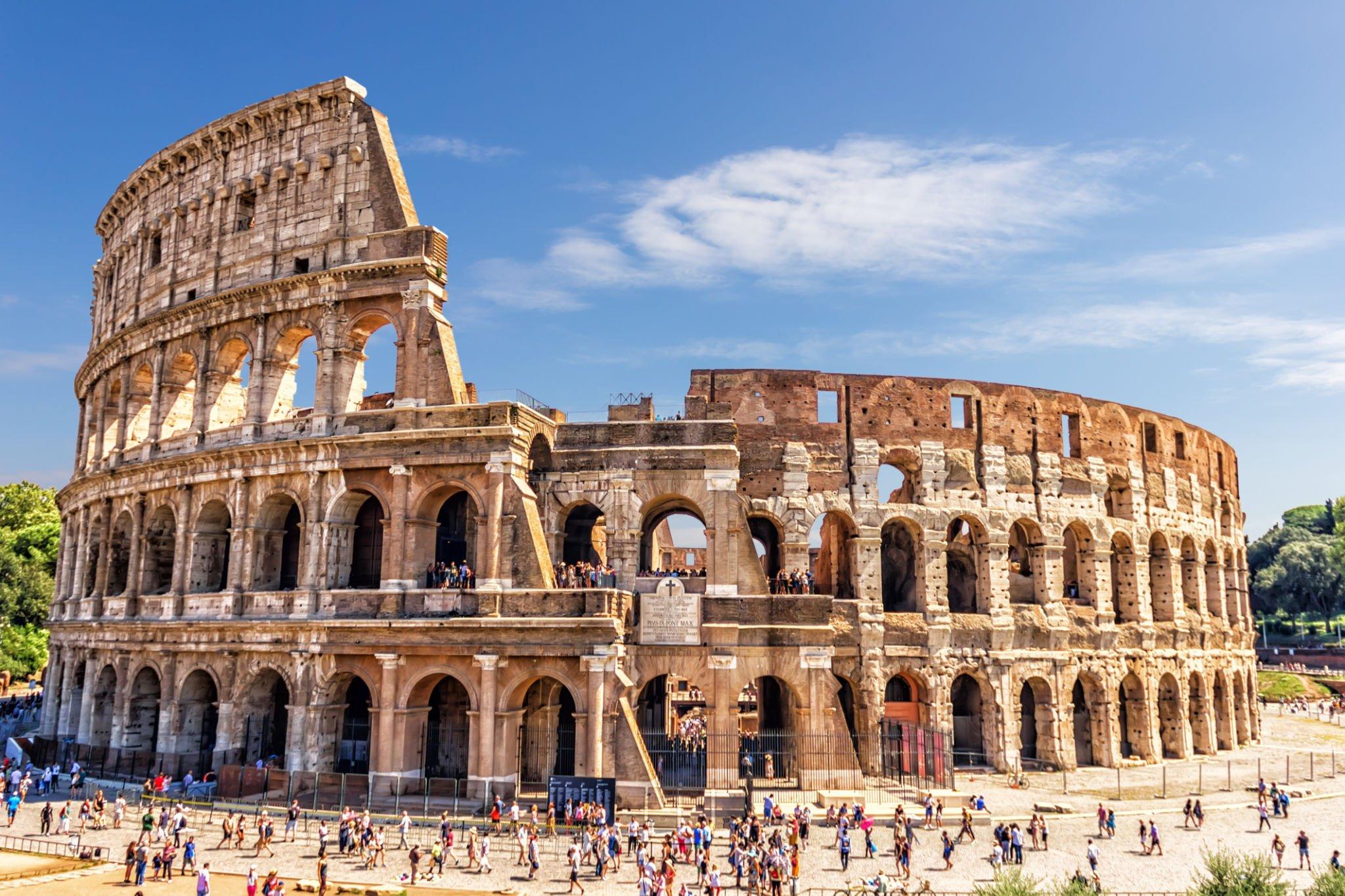
The Colosseum, also known as the Flavian Amphitheatre, is one of the most iconic and well-preserved ancient Roman structures. Located in the heart of Rome, Italy, it stands as a testament to the engineering and architectural prowess of the Roman Empire.
This massive amphitheater, constructed from concrete and sand, was a hub for gladiatorial combat, mock sea battles, and various public spectacles during its heyday.
The Colosseum's construction began in AD 70-72 under the emperor Vespasian and was completed in AD 80 by his son Titus.
The amphitheater could hold an estimated 50,000 to 80,000 spectators, making it one of the largest of its kind in the Roman world. Its elliptical shape and towering walls created a remarkable sight, and the innovative design allowed for efficient entry and exit of the massive crowds.
The Colosseum was primarily used for hosting various forms of entertainment, and it was at the center of Roman culture. Gladiatorial contests, chariot races, animal hunts, and dramatic performances took place within its walls.
These events were not only sources of entertainment but also a means for emperors to showcase their power and win favor with the people.
Walking through the Colosseum today, visitors can witness the grandeur of the ancient arena. The colossal stone walls, with their distinctive arches and columns, are a marvel of Roman engineering. As you explore the various levels of the Colosseum, it's easy to imagine the roaring crowds, the clash of weapons, and the bravery of the gladiators who once fought for their lives.
The Colosseum's significance extends beyond its historical and architectural importance. It has become a symbol of Rome and an emblem of the enduring legacy of the Roman Empire.
Millions of tourists from around the world visit the Colosseum every year to marvel at its grandeur and to connect with the rich history of ancient Rome.
2. Arena of Nîmes
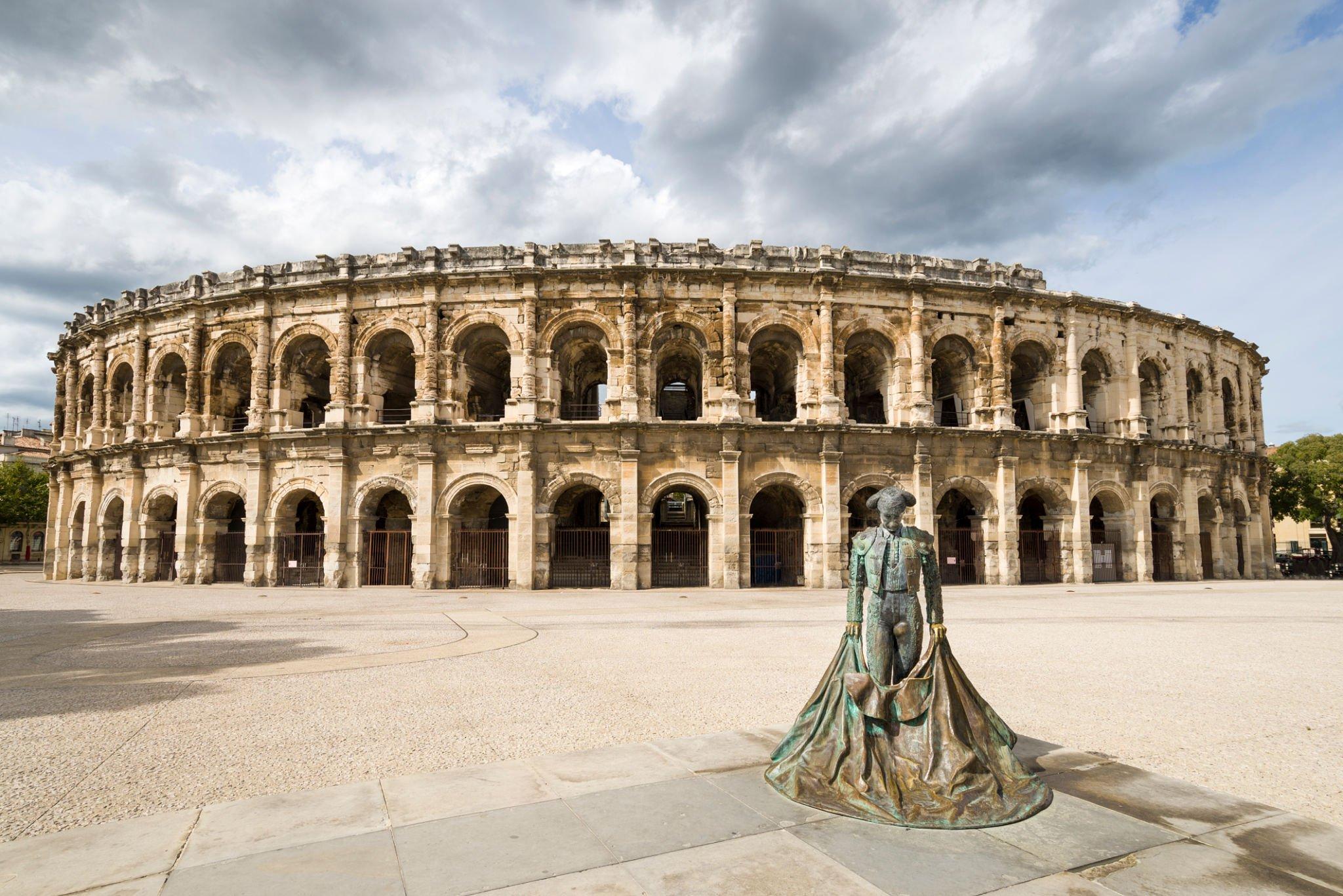
The Arena of Nîmes, also known as the Nîmes Amphitheatre, is another remarkable Roman amphitheater located in the city of Nîmes, in the southern part of France. Built during the first century AD, this amphitheater is a testament to the Roman influence in the region. The Arena of Nîmes, much like the Colosseum, was a venue for hosting various forms of entertainment and events.
Constructed during the reign of Emperor Augustus, the Arena of Nîmes could accommodate up to 24,000 spectators. Its elliptical shape and impressive architecture resemble the Colosseum, with a façade adorned by Doric columns. The sand-covered arena was the site of gladiatorial contests, chariot races, and other public spectacles, drawing crowds from all over the region.
One distinguishing feature of the Arena of Nîmes is its well-preserved façade, which stands as a magnificent example of Roman engineering and architecture. The stone walls, complete with arches and columns, have stood the test of time, offering a visual feast for visitors interested in ancient history.
Today, the Arena of Nîmes remains a popular tourist attraction and a venue for cultural events. Visitors can explore its interior, admire the architectural details, and gain insight into the Roman traditions of entertainment and leisure. It continues to serve as a cultural hub, hosting concerts, bullfights, and other events that keep its legacy alive.
3. Pula Arena
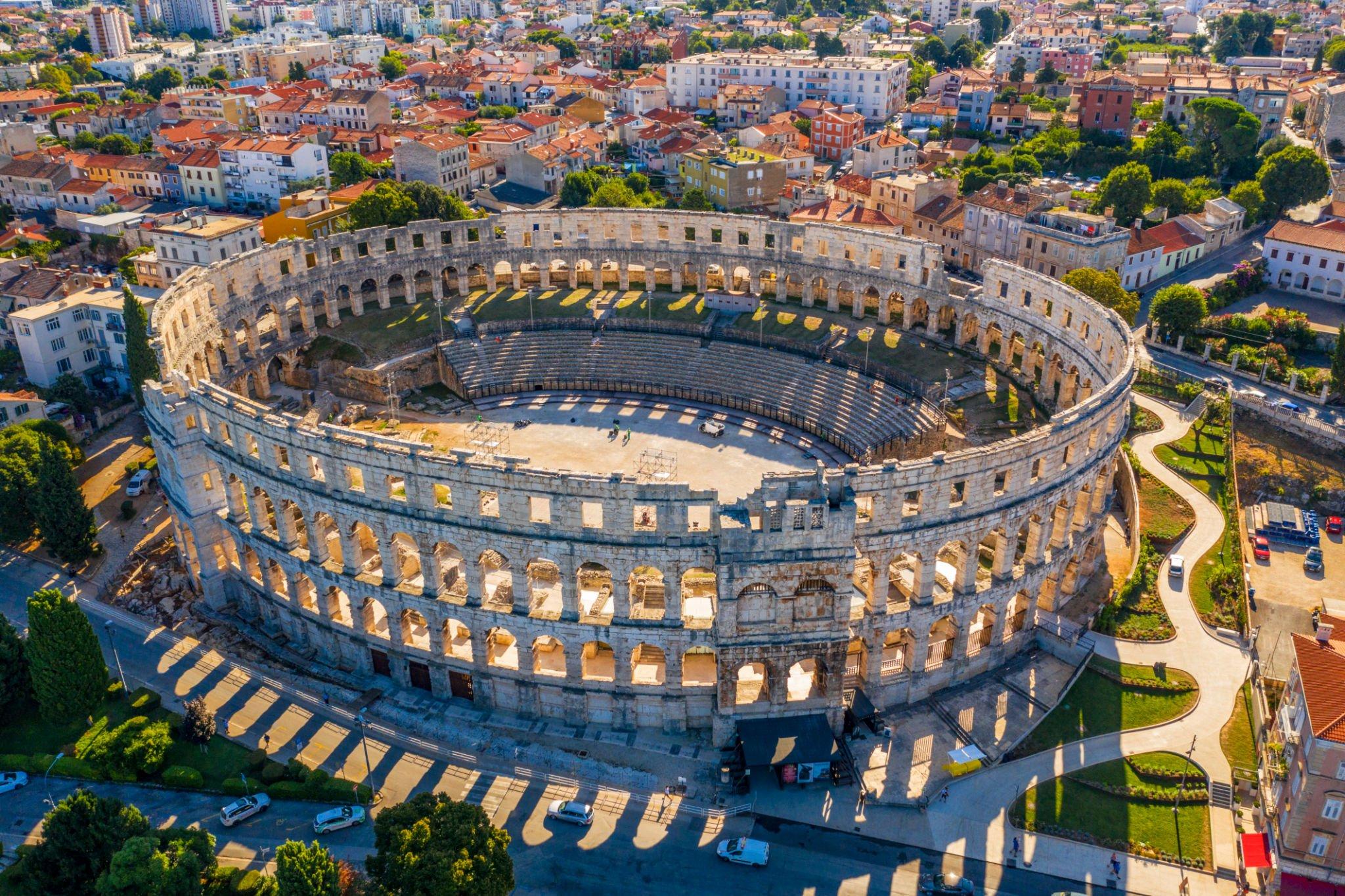
Pula Arena, located in the city of Pula, Croatia, is yet another fascinating Roman amphitheater that has survived the ravages of time. This well-preserved structure, built in the first century AD, is an excellent example of Roman architecture in the region and showcases the enduring influence of the Roman Empire.
Pula Arena is one of the six largest Roman arenas in the world and could host up to 23,000 spectators. Its elliptical shape, massive stone walls, and arched entrances are reminiscent of the Colosseum, reflecting the architectural norms of the time. The arena, with its sand-covered floor, was a venue for gladiator combat, chariot races, and other public events that captured the imagination of the Roman populace.
The arena's exterior façade, complete with columns and arches, provides a stunning visual spectacle. Visitors to Pula Arena can explore its interior and envision the historic events that once unfolded within its walls. The arena's long-standing presence is a testament to the enduring appeal of Roman architecture and the cultural significance of such structures.
Today, Pula Arena continues to serve as a cultural and historical site, attracting tourists from all over the world. It also hosts a range of events, from concerts to film festivals, further showcasing its adaptability and relevance in the modern era.
4. Verona Arena
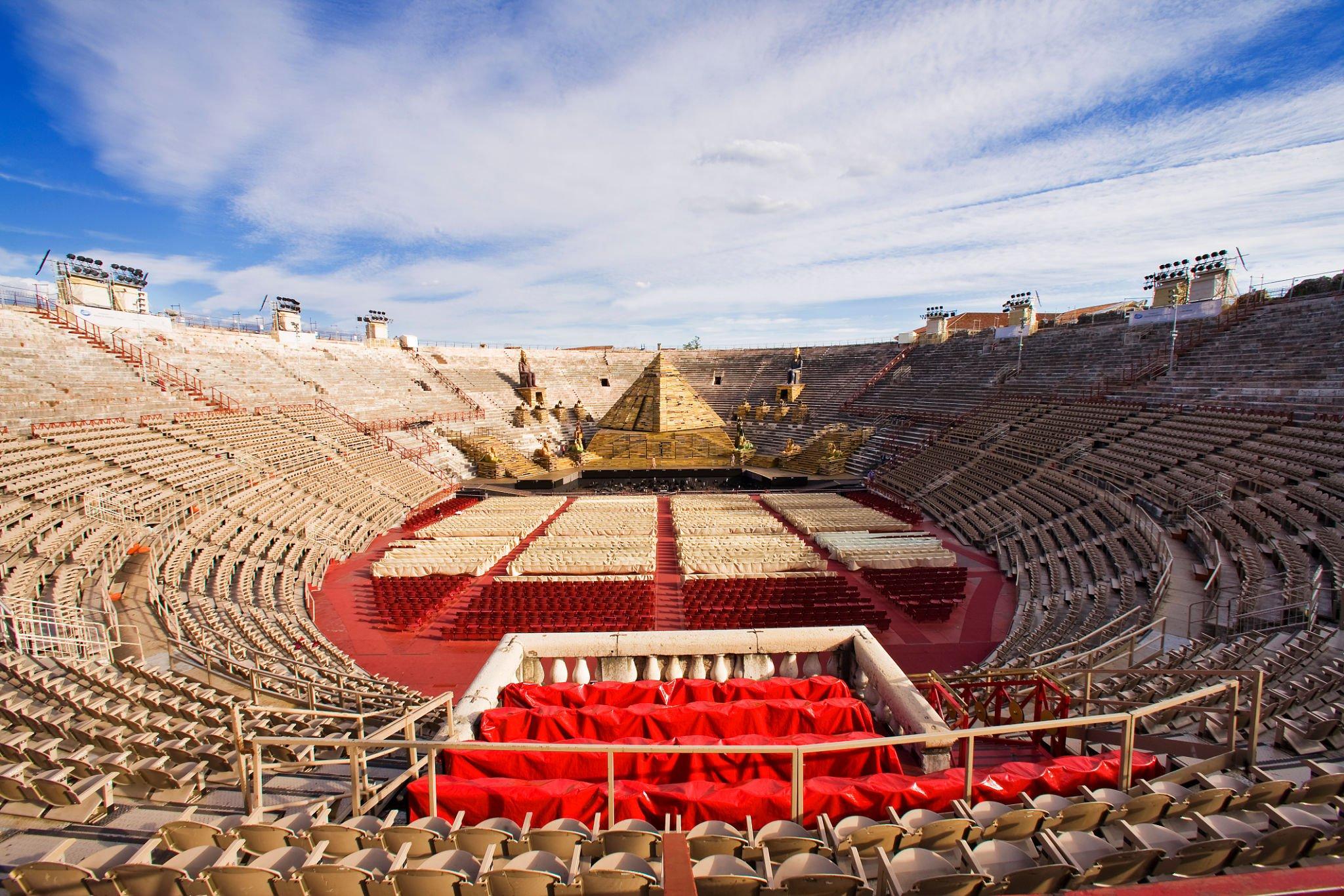
The Verona Arena, also known as the Arena di Verona, stands as a magnificent Roman amphitheater in the city of Verona, Italy. Constructed in the first century AD, it is one of the best-preserved ancient amphitheaters and has played a significant role in the cultural and historical landscape of Verona.
Much like the other Roman amphitheaters, the Verona Arena features an elliptical shape with impressive stone walls adorned with arches and columns. It could hold an estimated 30,000 spectators and was used for a variety of public events, including gladiatorial contests, chariot races, and theatrical performances.
The Verona Arena's exterior façade is particularly remarkable, with its well-preserved columns and arches. Its historical and architectural significance makes it a popular attraction for tourists and a symbol of Verona's rich heritage.
Today, the Verona Arena is renowned for its open-air opera performances. Every summer, the arena hosts the Verona Arena Festival, a world-famous event that attracts opera enthusiasts from all over the globe. The combination of the stunning Roman architecture and the enchanting performances creates a unique and memorable experience for visitors.
5. Amphitheatre of Pompeii
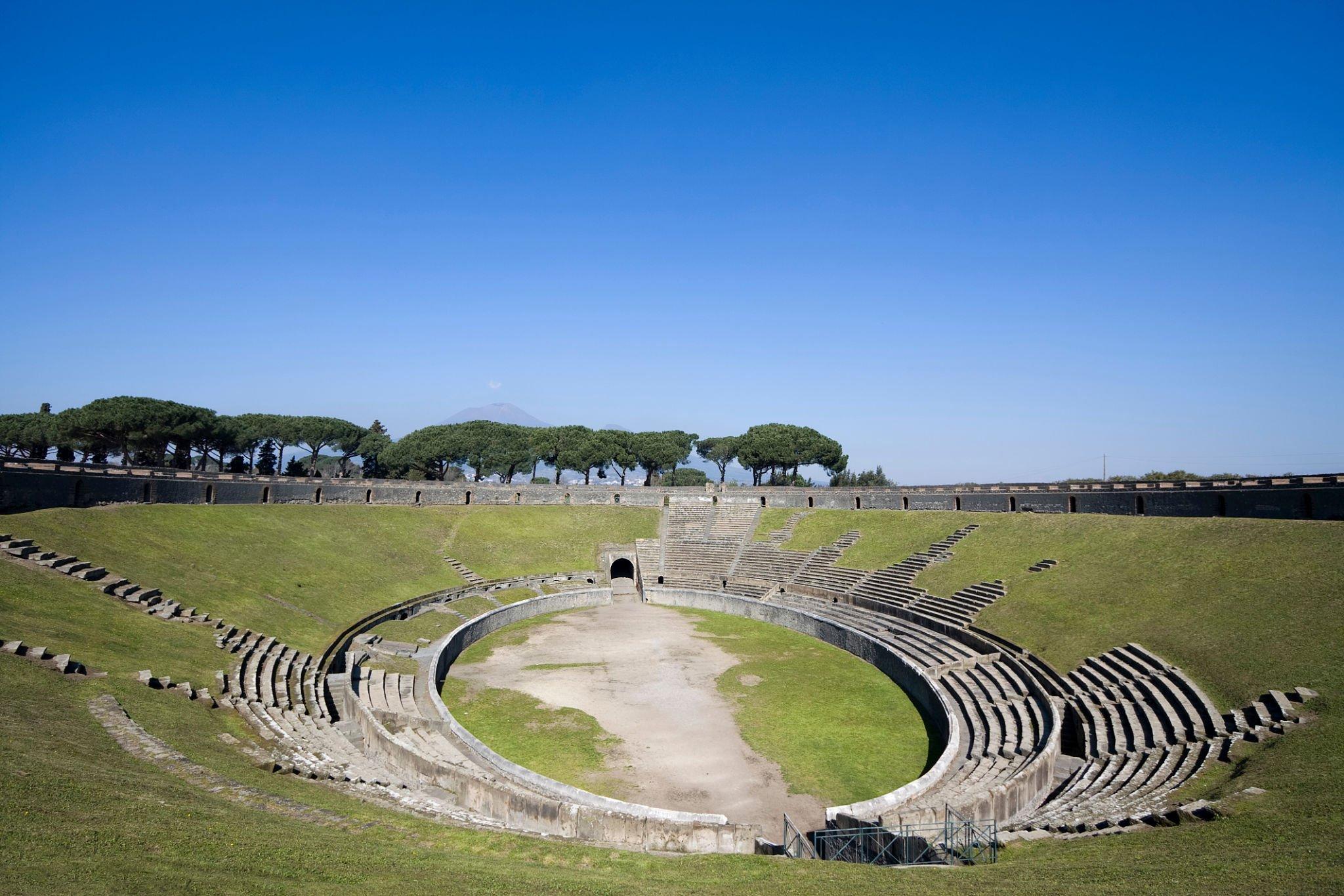
The Amphitheatre of Pompeii, situated in the ancient city of Pompeii, Italy, is a remarkable archaeological site that offers insights into Roman entertainment and daily life. Built around 70 BC, it is one of the oldest surviving amphitheaters in the Roman world.
The Amphitheatre of Pompeii is smaller in scale compared to the Colosseum and other major Roman amphitheaters, with a capacity of around 20,000 spectators. It played a crucial role in the social and cultural life of Pompeii, hosting gladiatorial contests and other public spectacles.
One unique feature of the Amphitheatre of Pompeii is its location within the city itself, making it an integral part of Pompeii's urban landscape. The amphitheater's well-preserved ruins provide a glimpse into the daily lives and recreational activities of the ancient Pompeiians.
Visitors to the Amphitheatre of Pompeii can explore the site and witness the ancient architecture, including the seating area and the sand-covered arena. This archaeological gem offers a different perspective on Roman amphitheaters, as it allows you to connect with the past in a more intimate and immersive manner.
6. Arles Amphitheatre
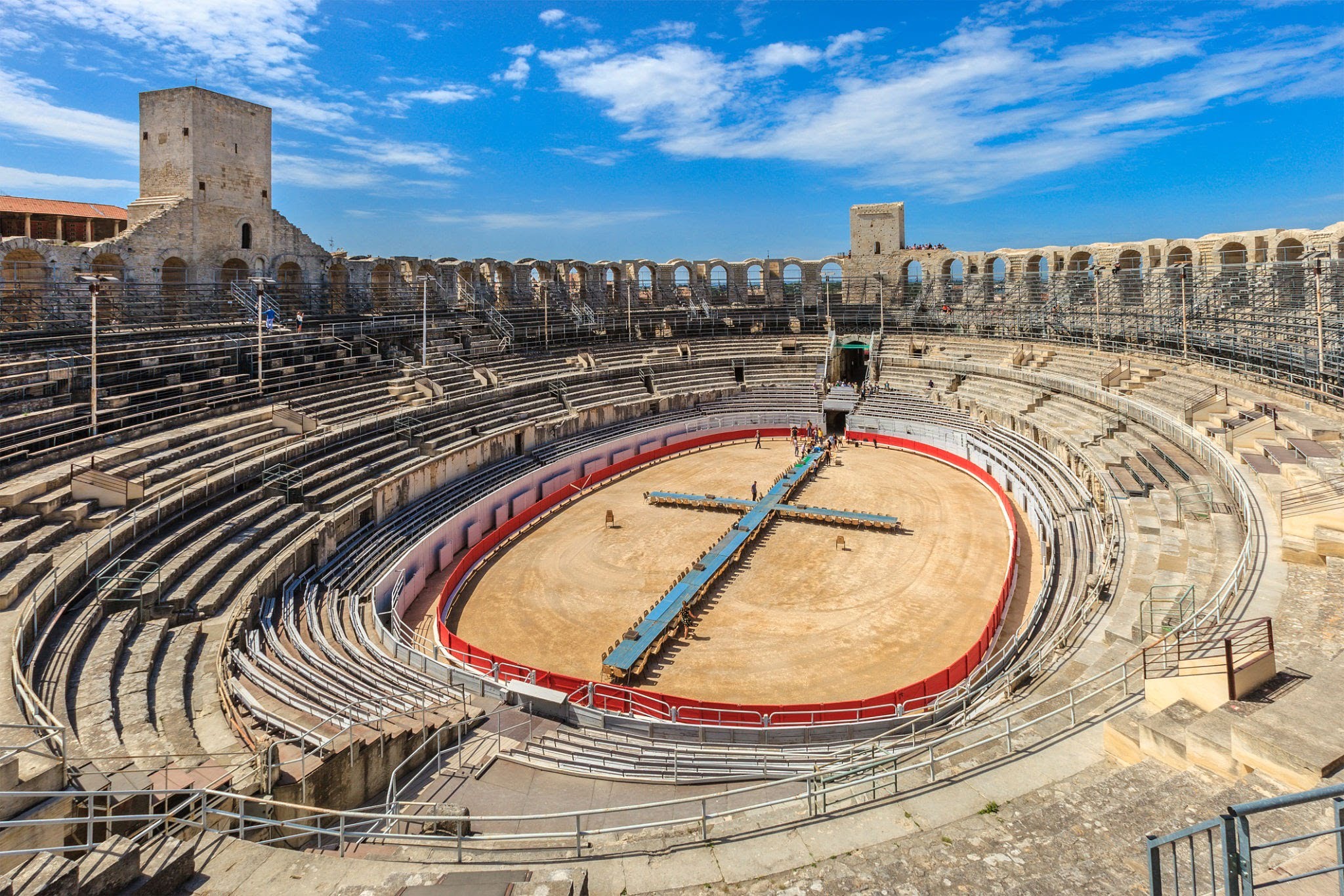
The Arles Amphitheatre, also known as the Arena of Arles, is a Roman amphitheater located in the town of Arles in the Provence region of southern France. This amphitheater, dating back to the 1st century AD, is a remarkable testament to the enduring influence of Roman architecture and engineering in the region.
Constructed during the reign of Emperor Augustus, the Arles Amphitheatre could hold up to 20,000 spectators. Its design and structure closely resemble that of the Colosseum in Rome, with an elliptical shape, towering stone walls, and a sand-covered arena. This magnificent venue was used for various forms of entertainment, including gladiatorial contests, chariot races, and other public spectacles that captivated the Roman populace.
The Arles Amphitheatre's exterior is characterized by its well-preserved façade, complete with a series of arches and columns. The architecture is a stunning example of Roman engineering, showcasing the grandeur and aesthetics that were typical of the era. The amphitheater played a crucial role in the social and cultural life of Arles, offering citizens and visitors a place to gather and enjoy the excitement of public events.
Today, the Arles Amphitheatre is a popular tourist attraction and a symbol of Arles' rich history. Visitors can explore the interior of the amphitheater, marvel at its architectural details, and imagine the historical events that unfolded within its walls. It continues to serve as a cultural venue, hosting various events and festivals that keep its legacy alive in the modern era.
7. Anfiteatro Flavio Neroniano
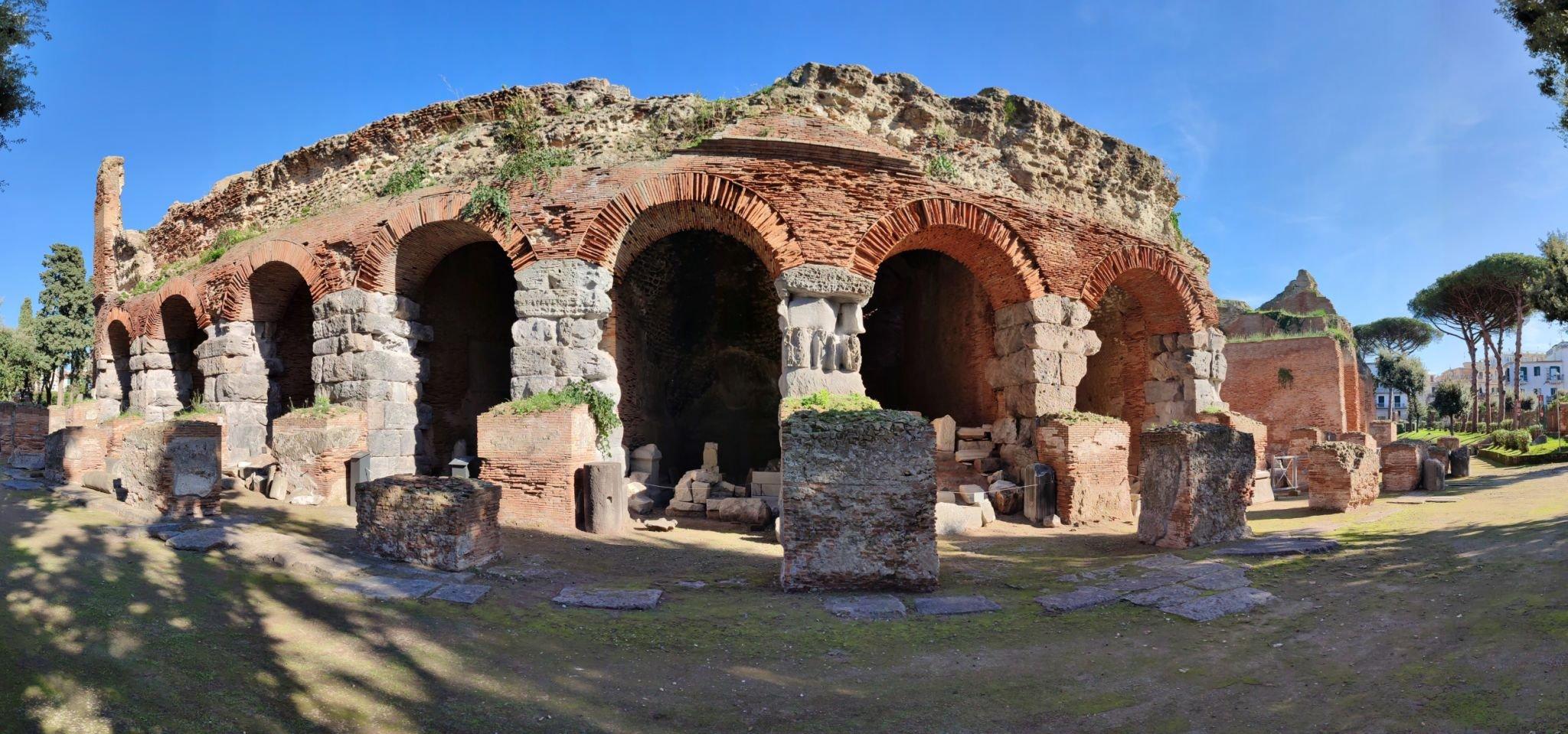
Anfiteatro Flavio Neroniano, also known as the Flavian Amphitheatre of Pozzuoli, is an ancient Roman amphitheater located in Pozzuoli, near Naples, Italy. This well-preserved structure, dating back to the 1st century AD, is a testament to the Roman presence in the region and the enduring legacy of Roman architecture.
Built during the reign of Emperor Vespasian, Anfiteatro Flavio Neroniano could accommodate up to 20,000 spectators. The amphitheater follows the typical Roman design with its elliptical shape, towering stone walls, and a sand-covered arena. It served as a venue for gladiatorial combat, chariot races, and other forms of public entertainment that were popular during the Roman era.
The exterior façade of Anfiteatro Flavio Neroniano features well-preserved arches and columns, highlighting the architectural prowess of the time. This amphitheater was an integral part of the social and cultural life of Pozzuoli, drawing crowds from near and far to witness its thrilling events.
Today, Anfiteatro Flavio Neroniano is a historical and cultural attraction, welcoming visitors from around the world. Tourists can explore the interior of the amphitheater, admire its architectural features, and connect with the historical significance of the site. It occasionally hosts events and performances, further showcasing its adaptability and relevance in the modern era.
8. Amphitheater of El Jem
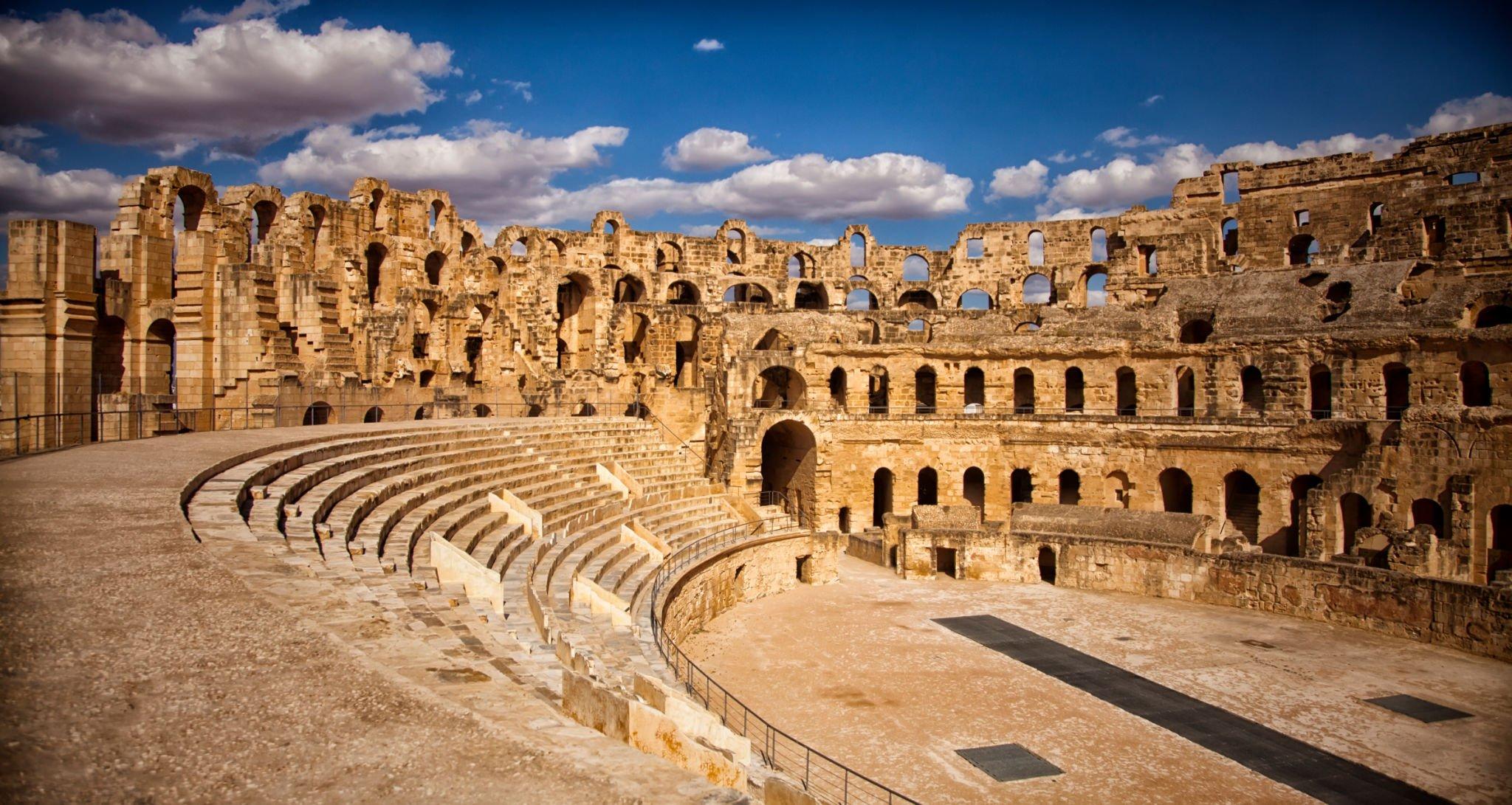
The Amphitheater of El Jem, located in the town of El Jem in Tunisia, is a striking Roman amphitheater that has earned the designation of a UNESCO World Heritage site. Built in the 3rd century AD, this amphitheater stands as a testament to the Roman influence in North Africa and the enduring appeal of Roman architecture.
The Amphitheater of El Jem is one of the best-preserved Roman amphitheaters outside of Italy. With a capacity of around 35,000 spectators, it ranks among the largest in the Roman world. Its elliptical shape and towering walls, complete with arches and columns, showcase the grandeur of Roman engineering. The sand-covered arena hosted gladiatorial contests, chariot races, and other forms of entertainment that were integral to Roman culture.
The exterior of the Amphitheater of El Jem is particularly impressive, with its well-preserved façade offering a stunning visual spectacle. The amphitheater's historical and architectural significance has made it a popular attraction for tourists, drawing visitors interested in ancient history and Roman culture.
Today, the Amphitheater of El Jem remains a significant historical site and a symbol of Tunisia's Roman heritage. Visitors can explore its interior, marvel at its architectural details, and gain insight into the role of such amphitheaters in Roman society. The amphitheater occasionally hosts cultural events, including concerts and festivals, adding a contemporary touch to its historical legacy.
9. Leptis Magna
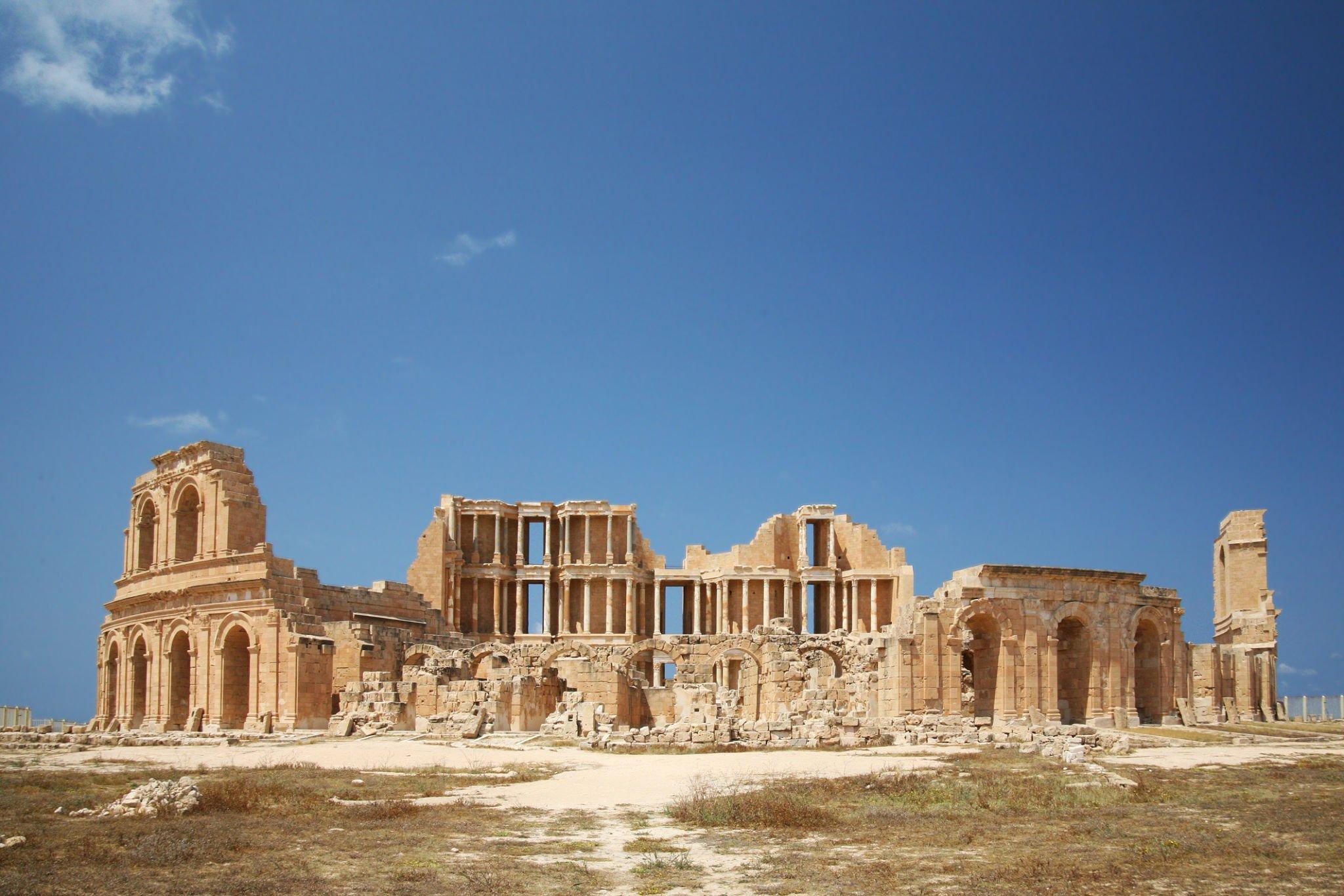
Leptis Magna, located on the Mediterranean coast of Libya, was an ancient Roman city that flourished during the 1st century AD. It was known for its impressive architecture and urban planning, making it one of the most significant Roman cities in North Africa.
The city of Leptis Magna boasted several remarkable structures, including a well-preserved amphitheater. This amphitheater, though smaller in scale compared to some of its counterparts, served as a focal point for public events and entertainment. It offered seating for approximately 16,000 spectators and featured the classic Roman design with its elliptical shape and sand-covered arena.
Leptis Magna, as a whole, showcases the grandeur of Roman urban planning, with its well-preserved buildings, temples, and other structures. The city's architecture and layout provide valuable insights into the daily life and culture of the Roman inhabitants of North Africa.
Today, Leptis Magna is an archaeological site and a UNESCO World Heritage site. It offers visitors the opportunity to explore the remnants of this ancient city and its amphitheater, gaining a deeper understanding of the Roman presence in the region and the historical significance of such sites.
10. Arles
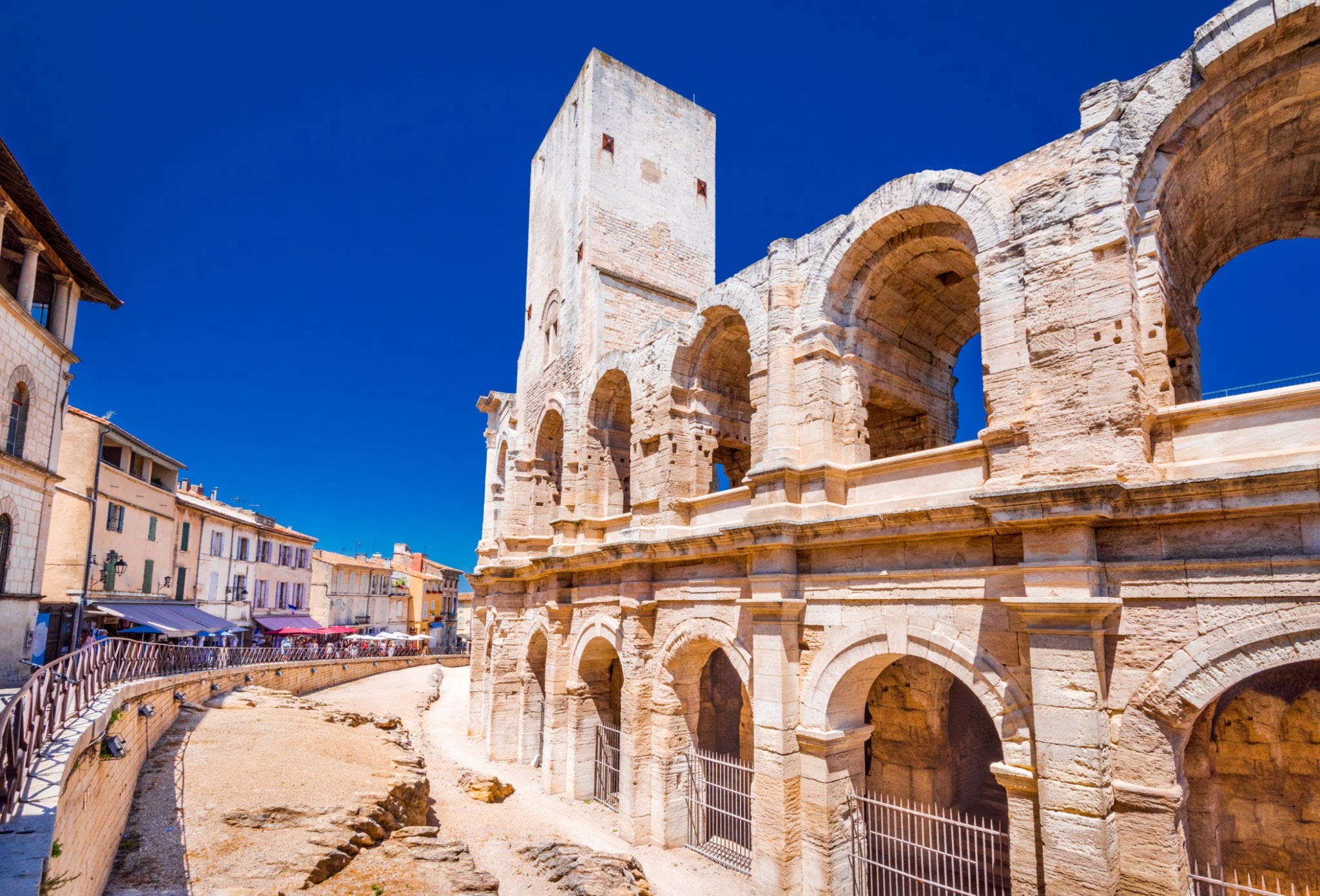
Arles, a picturesque town in the Provence region of southern France, is not only home to the Arles Amphitheatre but also boasts a rich history and cultural heritage. The town itself serves as a living example of Roman influence in the region and is known for its well-preserved Roman architecture.
Arles was established as a Roman colony in the 1st century BC and served as an important regional center. The town's architecture, including its ancient city walls, Roman baths, and various structures, reflects the grandeur of Roman urban planning and engineering.
In addition to the Arles Amphitheatre, Arles is famous for the Alyscamps, an ancient Roman cemetery, and the Romanesque cloisters of Saint-Trophime. The town's historical sites and museums offer visitors a journey through time, allowing them to connect with the rich history of the region.
Arles has also been a source of inspiration for artists, most notably Vincent van Gogh, who lived and worked in the town during the late 19th century. The landscapes and scenes of Arles feature prominently in many of his famous works, making the town an essential stop for art enthusiasts.
Today, Arles continues to be a cultural hub, with its Roman heritage and artistic legacy attracting tourists from around the world. The town's vibrant atmosphere, with its festivals, exhibitions, and local cuisine, ensures that its cultural and historical significance remains relevant in the modern era.
11. Chester Roman Amphitheatre
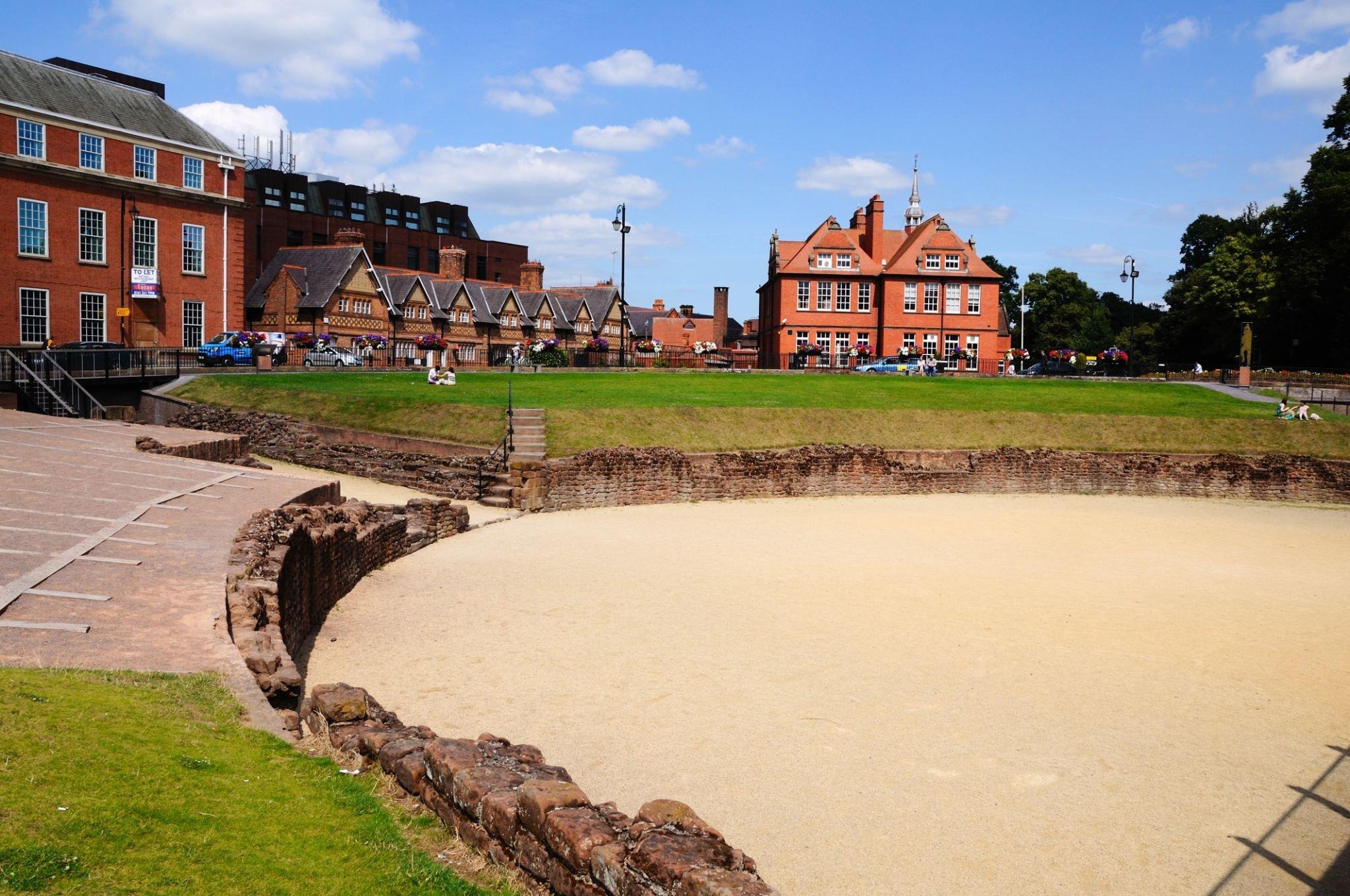
The Chester Roman Amphitheatre, situated in the historic city of Chester, England, is an archaeological treasure that provides a glimpse into the Roman legacy in Britain. This well-preserved amphitheater, dating back to the 1st century AD, is a testament to the Roman influence on the region and its architectural prowess.
Constructed during the Roman occupation of Britain, the Chester Roman Amphitheatre was a significant structure in its time. It could accommodate up to 7,000 spectators and was used for various forms of entertainment, including gladiatorial contests, animal hunts, and public events that were characteristic of Roman culture.
The amphitheater's oval shape, the surrounding stone walls, and the central sand-covered arena closely resemble the typical Roman design. Visitors to the site can explore the well-preserved ruins, appreciate the architectural details, and imagine the historical events that once unfolded within these walls.
Today, the Chester Roman Amphitheatre serves as an important historical site and tourist attraction. It allows visitors to connect with the Roman history of Britain, offering a tangible link to the past. The amphitheater, surrounded by picturesque parkland, provides a serene setting for reflection on the region's rich heritage.
12. Oudna
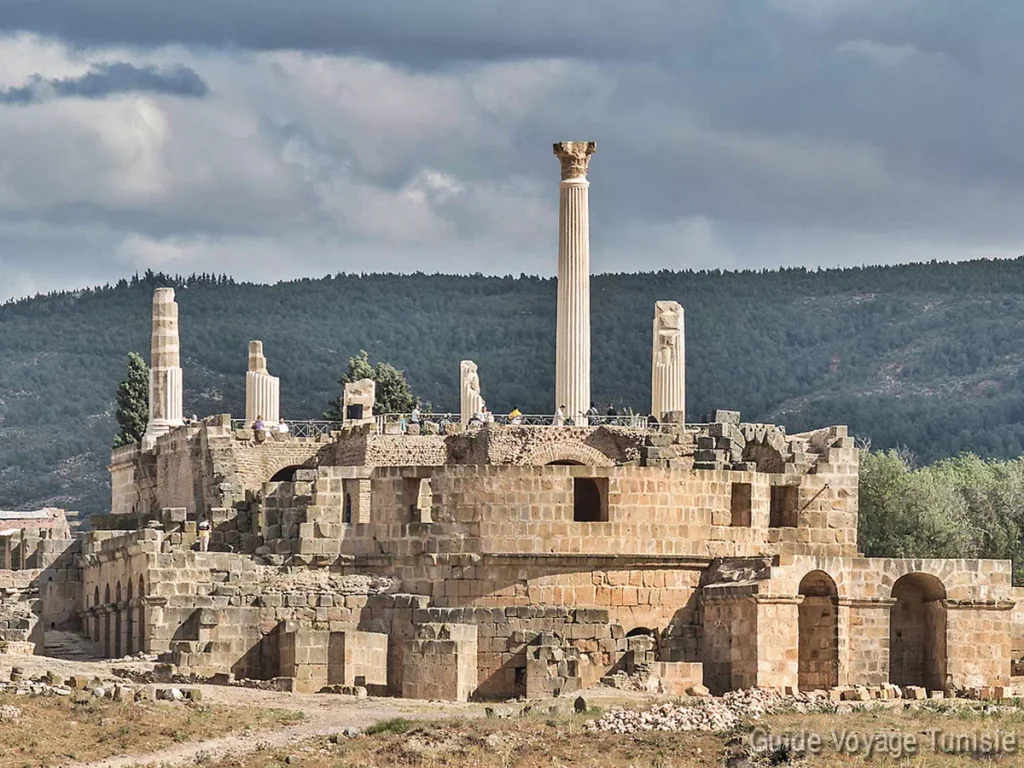
Oudna, also known as Uthina, is an archaeological site located in Tunisia, showcasing the Roman presence in North Africa. This ancient city, established during the Roman era, holds a significant place in the history of the region and is known for its well-preserved ruins.
One of the prominent features of Oudna is its Roman amphitheater. While smaller in scale compared to some of the larger amphitheaters, it was an integral part of the social and cultural life of the city. The amphitheater, with its sand-covered arena and stone seating, would have hosted gladiatorial contests and various forms of public entertainment.
Oudna's archaeological remains provide insight into the daily life and culture of the Roman inhabitants of North Africa. Visitors to the site can explore the ancient city, witness the amphitheater, and connect with the historical significance of this Roman settlement.
Today, Oudna is an archaeological site and a UNESCO World Heritage site, allowing visitors to step back in time and appreciate the enduring legacy of Roman culture in North Africa.
13. Amphitheatre of Capua
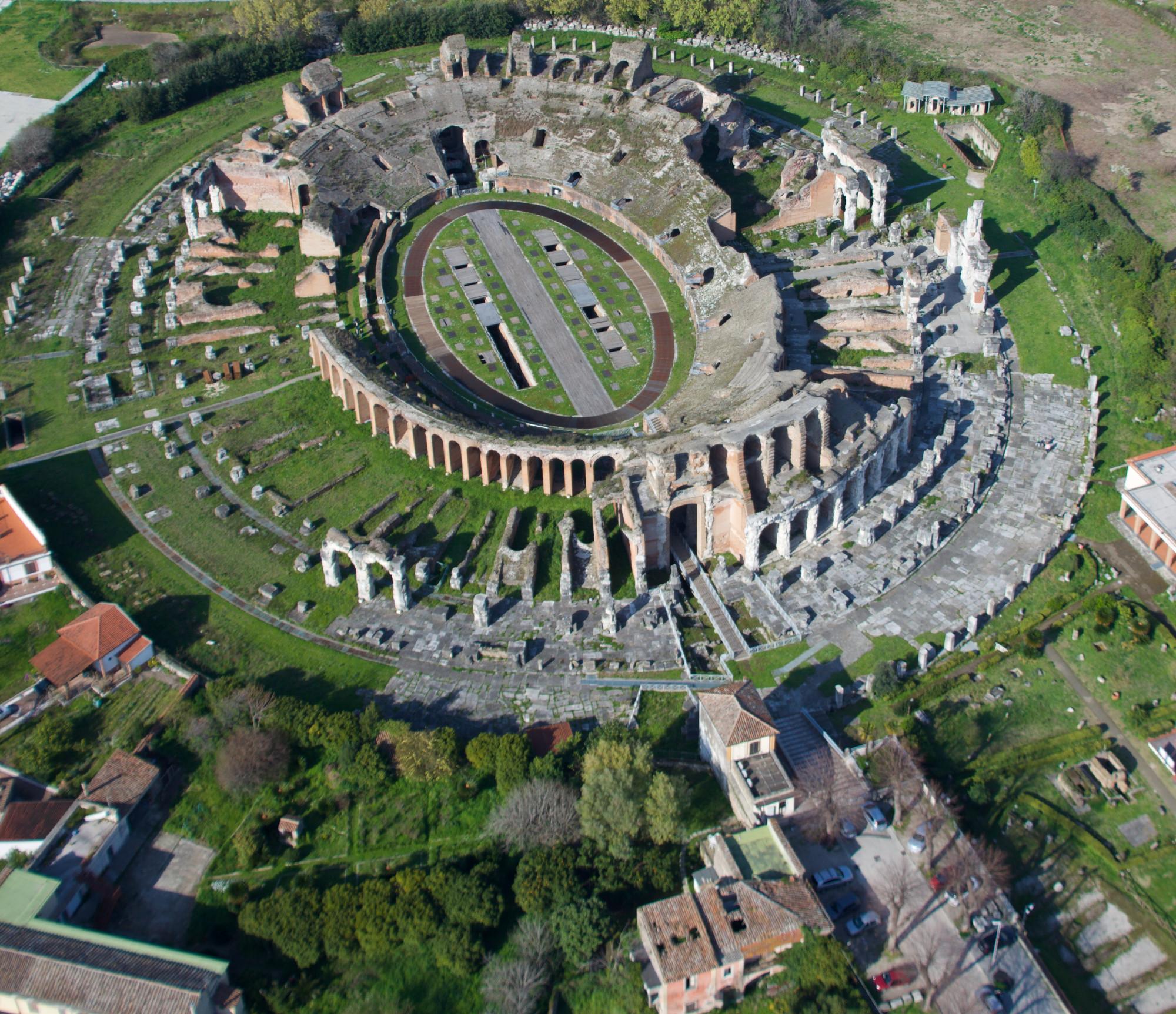
The Amphitheatre of Capua, located in Capua, Italy, is an ancient Roman amphitheater that has witnessed the ebb and flow of history. This well-preserved amphitheater, dating back to the 1st century AD, is a testament to the enduring influence of Roman architecture in the region.
The Amphitheatre of Capua could accommodate up to 60,000 spectators, making it one of the largest Roman amphitheaters. Its elliptical shape, towering stone walls, and sand-covered arena were typical of Roman design. The amphitheater was the site of grand gladiatorial contests, chariot races, and various forms of public entertainment that captivated the Roman populace.
The exterior of the Amphitheatre of Capua is adorned with impressive arches and columns, showcasing the architectural prowess of the time. It played a significant role in the social and cultural life of Capua, drawing crowds from all over the region.
Today, the Amphitheatre of Capua remains a historical and cultural attraction, welcoming visitors from around the world. Tourists can explore its interior, admire the architectural features, and gain insight into the role of such amphitheaters in Roman society. The amphitheater occasionally hosts cultural events, breathing new life into its historical legacy.
14. Roman Amphitheatre of Caerleon
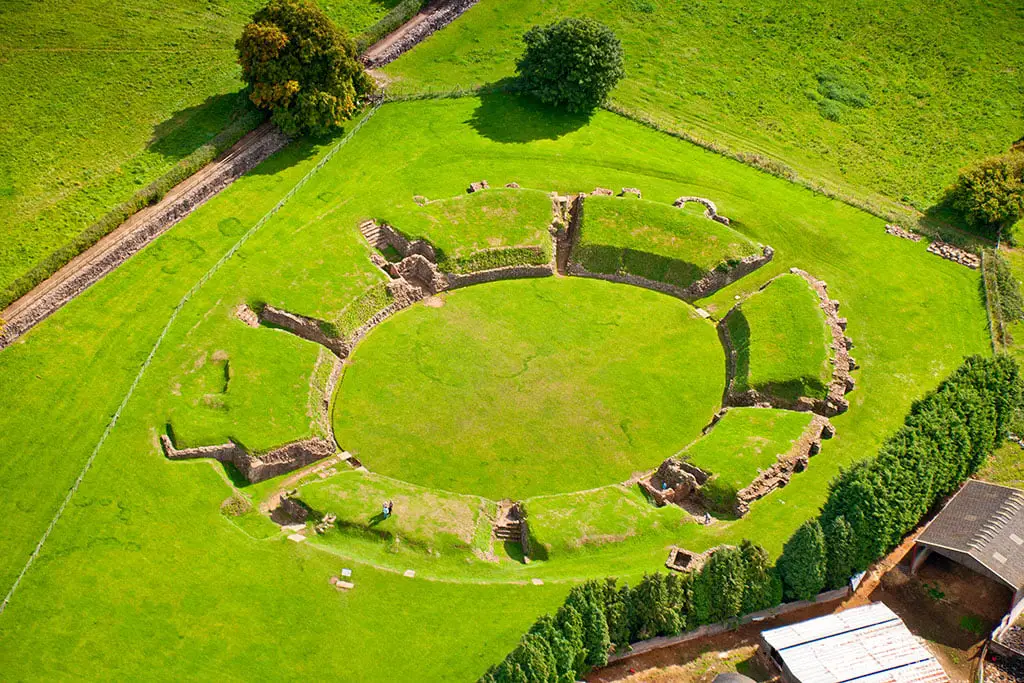
The Roman Amphitheatre of Caerleon, situated in Caerleon, Wales, is an archaeological site that offers a unique perspective on the Roman presence in Britain. This amphitheater, dating back to the 1st century AD, is a testament to the Roman influence in the region.
Caerleon, known as Isca in Roman times, was an important fortress and settlement for the Romans. The Roman Amphitheatre of Caerleon could hold up to 6,000 spectators and was used for various forms of entertainment, including gladiatorial contests, animal hunts, and public events that were characteristic of Roman culture.
The amphitheater's well-preserved ruins provide a glimpse into the past, allowing visitors to appreciate its architectural details and imagine the historical events that once unfolded within these walls.
Today, the Roman Amphitheatre of Caerleon serves as an important historical site and tourist attraction. It offers visitors a tangible connection to the Roman history of Britain, providing insights into the daily life and culture of the Roman inhabitants of the area. The amphitheater, surrounded by picturesque countryside, invites visitors to explore its history and appreciate the enduring legacy of Roman culture in Wales.
15. London's Roman Amphitheatre
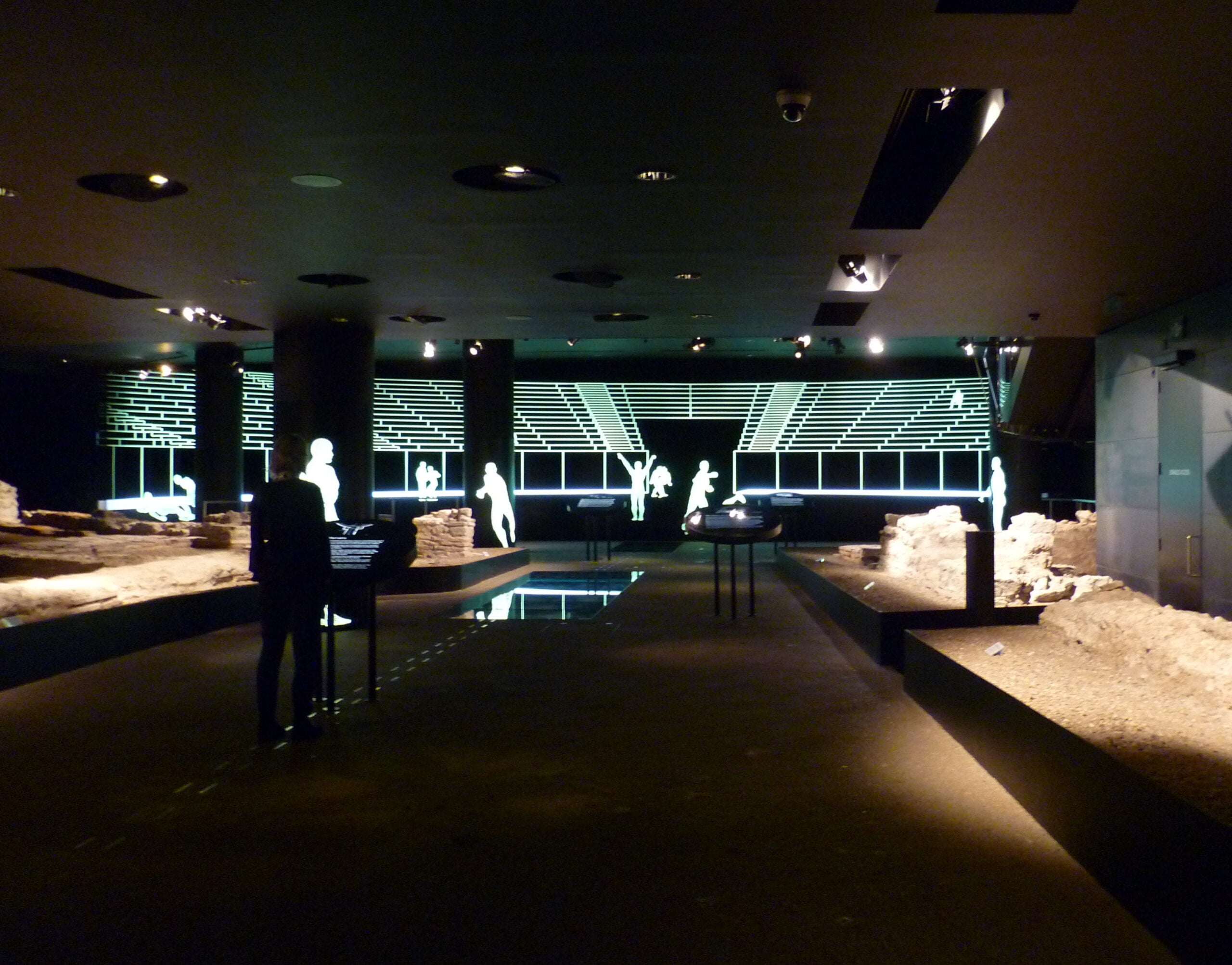
London, the bustling capital of the United Kingdom, is a city steeped in history, with a fascinating Roman past that is often overshadowed by its modern identity. The discovery of London's Roman Amphitheatre, hidden beneath the bustling streets, was a remarkable revelation that sheds light on the city's ancient history.
The Roman Amphitheatre in London, dating back to the 1st century AD, was a significant structure in Roman Londinium. With a capacity of around 6,000 spectators, it served as a venue for various forms of entertainment, including gladiatorial contests and public spectacles. The amphitheater's well-preserved remnants, including portions of its walls and seating, provide a window into the Roman life in ancient London.
Visitors to London can explore the underground site, now housed within the Guildhall Art Gallery. The discovery of the amphitheater showcases the city's layered history, where ancient Roman structures coexist with the modern metropolis.
While in London, tourists can also visit other Roman-related sites, such as the Roman city wall and the Temple of Mithras, further enriching their understanding of the Roman legacy in the heart of the city.
16. Arènes de Lutèce
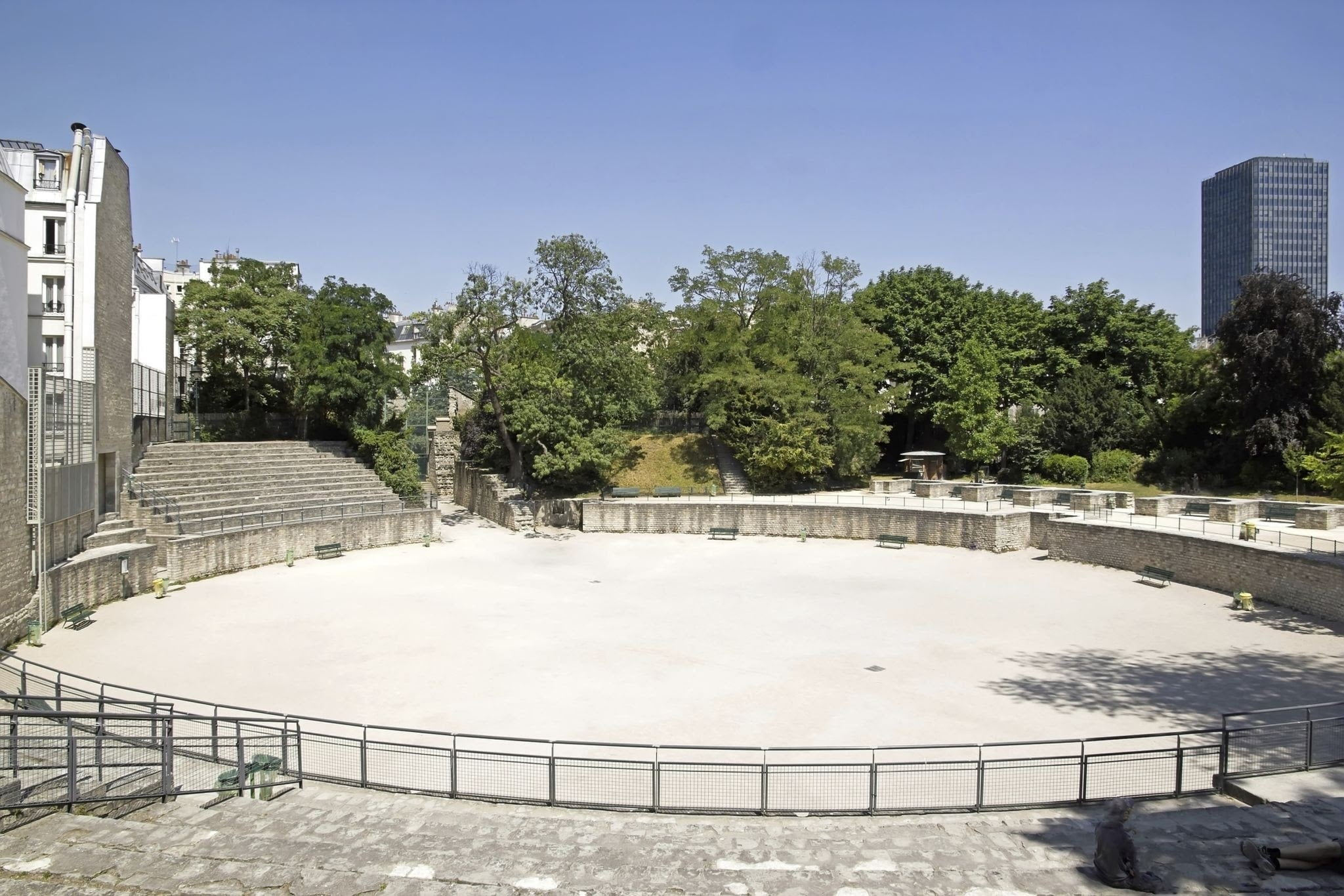
The Arènes de Lutèce, located in the Latin Quarter of Paris, France, is a hidden gem that transports visitors back in time to Roman Paris, known as Lutetia. This ancient amphitheater, constructed in the 1st century AD, is a testament to the Roman presence in the region.
The Arènes de Lutèce, with its elliptical shape and well-preserved stone seating, could hold up to 15,000 spectators. It was a hub for various forms of entertainment, including gladiatorial contests, animal hunts, and theatrical performances. The amphitheater's ruins, nestled amidst a peaceful park, create a serene ambiance that is a stark contrast to the bustling modern city that surrounds it.
Visitors to the Arènes de Lutèce can take a step back in time, exploring the ancient ruins and imagining the historical events that unfolded within these walls. It is a place that provides a quiet refuge in the heart of Paris, where history and modernity coexist.
Paris, often celebrated for its romantic ambiance and iconic landmarks, has a rich Roman history that is often overlooked. The Arènes de Lutèce is a hidden treasure that offers a unique perspective on the city's past.
17. Cyrene, Libya

Cyrene, located in present-day Libya, was once a thriving ancient Greek and Roman city known for its intellectual and cultural achievements. It was founded in 631 BC and became an important center of learning, philosophy, and the arts. The city's Roman amphitheater is a reminder of its cultural and historical significance.
The Cyrene Amphitheater, constructed during the Roman era, could accommodate up to 10,000 spectators. Its design, with stone seating and a central arena, closely followed the typical Roman amphitheater layout. The amphitheater was used for various forms of entertainment, including gladiatorial contests and theatrical performances.
Visiting Cyrene today offers a glimpse into the city's remarkable past. The archaeological site, which includes the amphitheater, ancient temples, and well-preserved structures, tells the story of a city that was not only a center of culture but also a significant Roman settlement.
Cyrene's ancient ruins are a testament to the city's intellectual and cultural heritage, making it a site of interest for history enthusiasts and archaeology buffs. The combination of its historical significance and the allure of the Libyan landscape creates a unique experience for those who venture to explore this ancient city.